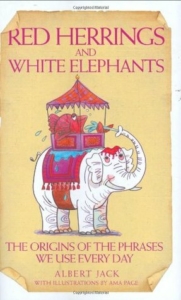Valuable Blog Marketing Lesson in a Solo Cup

You know those red plastic SOLO drinking cups? Maybe you’re heard that the lines wrapped around the outside are actually measuring guides, observes Todd Hunt in his latest Hunt’s Headlines email. The line closest to the bottom measures 1 ounce of liquor, the next one 5 ounces of wine, with the line close to the top measuring 12 ounces of beer. Forget that, says parent company Dart Container Corporation, stating in no uncertain terms that the lines are designed for function only and are not measurements.
“Advertising can….introduce emotions, images, and symbols that stimulate desire, and it can show how a product or brand compares favorably to competitors,” lumenlearning.com explains.
“Reminder advertising reminds people about the need for a product or service, or the features and benefits it will provide when purchased.”
According to the Cleveland State University Writing Center, “Critical readers seek knowledge; they do not “rewrite” a work to suit their own personalities”. But are blog readers “critical” in that sense? Not likely. Sure, as blogginexplorer.com stresses, “Simply put, your blog’s target audience is the group of readers who your blog can help the most.” And, when you target that very specific audience, you have a better idea about what they need and want.
Still, content writers need to be aware that readers bring their own biases to the page. Without even realizing it, blog visitors are going to be thinking about how they might use those lines on the red plastic cup to measure beer or wine (whether that was our intention or not!). And, we’ve come to realize at Say It For You, that’s OK. Blog posts are not meant to be ads, instead functioning like “advertorials”.
When you first begin blogging, Qeryz.com admits, “there is only ‘the middle’, entailing what you do, what you offer, and what problems you solve”. Surrounding this “middle” is your potential audience and what they care about. Identifying your audience is a process that never stops, cautions Queryz founder Sean Si.
As a blog marketer, salesbacker.com suggests, you have different ways to differentiate your product from competitors, including:
- by size
- by origin
- by branding or decoration
- by packaging
- by adding a feature or ingredient
- by offering a bonus
One way to engage blog readers is to share the history of your company. (The Solo Cup company, was founded in Chicago during the Great Depression, and is now 84 years old!) “How-we-did-it” stories make for very effective blog content for both business owners and professional practitioners, I’ve learned.
The lesson in the solo cup? To the blog writer, the product or service might represent one thing; to individual readers, it might represent another! It’s all good….





Follow us online!